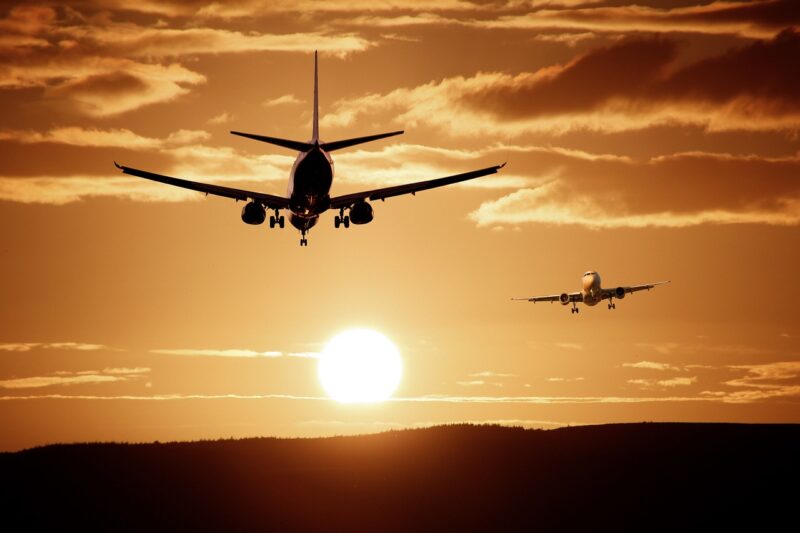From the Cockpit to the Living Room: How Airplanes Shaped Modern Entertainment
November 19, 2024

Air travel has revolutionized not only how we traverse geographical boundaries but also how we engage with entertainment. From the early days of flight to the modern era of Hollywood blockbusters and in-flight movies, airplanes have had a profound impact on the entertainment industry. This article explores the fascinating connection between aviation and entertainment, tracing the impact of airplanes on film, music, and popular culture.
1. The Birth of Air Travel and Its Cultural Impact
The first powered flight by the Wright brothers in 1903 marked the beginning of a new era. As air travel became more accessible in the subsequent decades, it changed not only the way people traveled but also how they experienced leisure and entertainment.
In the 1920s and 1930s, commercial aviation began to flourish, ushering in a new age of holiday-making. By the 1950s, with the advent of jet travel, transcontinental flights became feasible, enabling a wider audience to access a variety of entertainment options. People could travel to Hollywood, New York, and beyond to immerse themselves in the burgeoning film, music, and theater industries.
2. Airplanes in Film and Television
Airplanes have always played a significant role in the film industry, serving as both settings and symbols. Early aviation films, such as “The Dawn Patrol” (1930) and “Wings” (1927), laid the groundwork for how airplanes would be depicted on screen. As technology advanced, filmmakers could create more dynamic aerial sequences, which led to a rise in aviation-themed movies.
These films inspired a sense of adventure and exploration, appealing to audiences’ imaginations. Iconic films like “Top Gun” in the 1980s and more recently, films like “Sully” and “Dunkirk,” not only showcased impressive aerial combat but also human stories of bravery and survival.
The rise of air travel has also influenced television. Series like “Pan Am” and “Lost” infused stories of exploration and mystery with the allure of flight. Audiences often find themselves captivated by the magic of airplanes, which represent the thrill of travel and the excitement of the unknown.
3. The Evolution of In-Flight Entertainment
As air travel became commonplace, so did the need for passengers to be entertained during long flights. Initially, entertainment consisted of simple offerings like magazines and meals. However, airlines recognized the potential of in-flight entertainment systems as a way to enhance the travel experience.
In the 1960s, airlines began to incorporate films into their offerings, making classic movies available to a captive audience. This not only created a more enjoyable environment aboard aircraft but also established a new revenue stream for airlines.
Today, in-flight entertainment has evolved into a vast array of options, from on-demand movies and TV shows to music, games, and even virtual reality experiences. Passengers can enjoy the latest blockbusters or rediscover classic films, all while soaring through the skies. This integration of entertainment into the travel experience has fundamentally altered how we perceive air travel, making it an intrinsic part of global culture.
4. Music and Aviation: A Sonic Journey
Airplanes have also significantly impacted the music industry. The freedom of air travel allowed musicians to tour globally, fostering cultural exchange and collaboration. Icons like Frank Sinatra, The Beatles, and more recently, Ed Sheeran and Taylor Swift, have traversed continents via airplane, broadening their audience and influence.
Music videos, too, have drawn inspiration from aviation. Filmmakers and artists have used airplanes as symbols of freedom, adventure, and sometimes, tragedy. Music videos depicting planes soaring through the clouds evoke feelings of longing and exploration, connecting audiences visually and emotionally. Songs like “Come Fly with Me” by Frank Sinatra capture the romance associated with travel by air, cementing the airplane’s role in popular music culture.
5. The Influence of Air Traffic on Gaming and Virtual Experiences
The integration of aviation technology into gaming cannot be overstated. Flight simulators have become a genre of their own, offering players a realistic flying experience. Games like Microsoft Flight Simulator and DCS World allow aviation enthusiasts to experience the thrill of piloting various aircraft, with realistic graphics and controls.
Moreover, the rise of virtual reality applications brings air travel into the home. Users can not only simulate flying but can also embark on virtual vacations, touring famous destinations worldwide without leaving their living rooms. This newfound convenience provides an escape for people whose dreams of travel may be hindered by financial or time constraints.
6. Aviation’s Impact on Live Performances and Festivals
Airplanes have influenced live performances, enabling artists to reach fans worldwide. Major music festivals and concerts in places like Coachella, Glastonbury, or Lollapalooza attract international attendees, many of whom fly to these events. This accessibility further deepens fans’ connection to their favorite artists and allows cultures to exchange ideas and creativity.
In an era where major cities are easily connected by air travel, artists are no longer confined to their local scenes. They can tour extensively, exposing diverse audiences to their music and performances. The impact of air travel on live entertainment cannot be overstated; it allows artists to traverse boundaries and share their stories through music, dance, and performances, fostering a global cultural tapestry.
7. Conclusion: The Unbreakable Bond Between Aviation and Entertainment
From inspiring films to transformative live performances, airplanes have played a vital role in shaping modern entertainment. The cultural exchange fostered by air travel has not only broadened horizons but has also solidified the connection between different artistic mediums.
As we continue to evolve as a society—advancing technologies in aviation, film, music, and gaming—the link between airplanes and entertainment will only grow stronger. The world becomes smaller as we embrace entertainment that is influenced by the beauty and excitement of flight. The thrill of adventure, romance, and exploration lives on, highlighting how airplanes have shaped a vast landscape of modern entertainment.
In conclusion, airplanes have transformed our cultural landscape significantly. They serve as a metaphor for exploration and a bridge that connects diverse cultures through entertainment, demonstrating how aviation continues to enrich our lives in ways we might not always fully realize.








